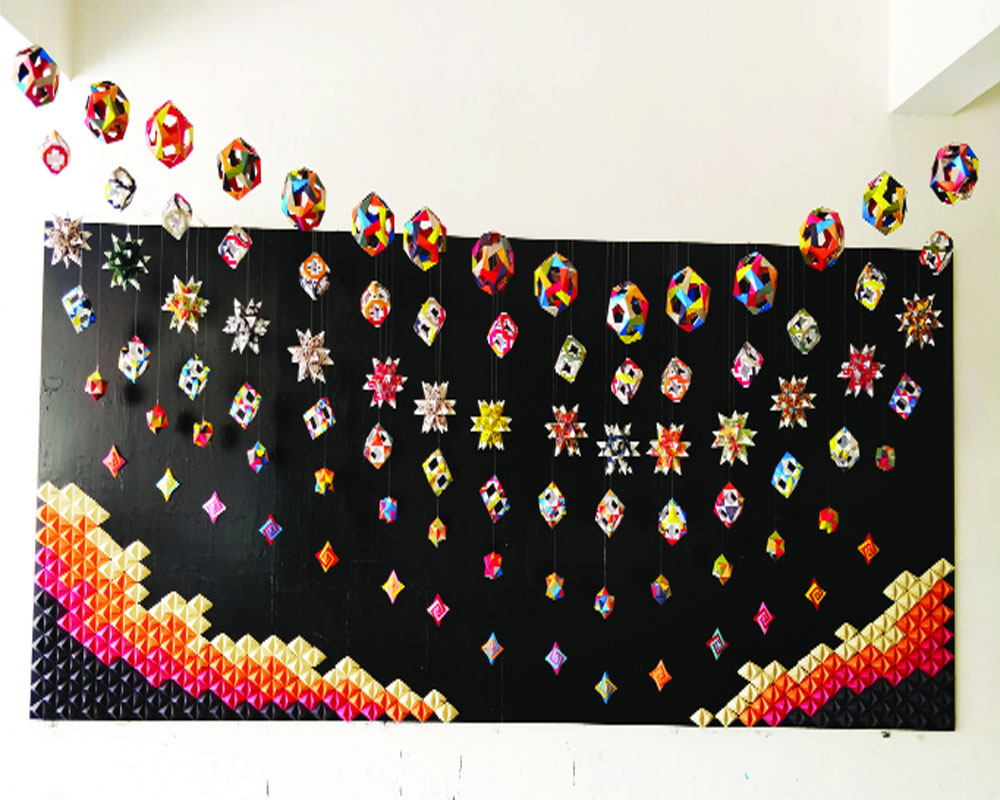We live in a symbiotic environment, and in India, a lot has come to traditional aesthetics within this environment despite and because of various constraints of transferability between modernity and tradition
AnantU — as we fondly call it — is India’s first design university in the making located on the outskirts of Ahmedabad. The campus, these days, is a mega construction site, save a spanking new and trendy academic complex. The students are around, building prototypes of homes, green cities, furniture, fashion accessories, cars, in the studio classrooms, labs, and outdoors on campus. They are encouraged — by faculty and practitioners from India and abroad — to be rooted in indigenous techniques and aesthetics, yet informed by the world.
I am on the AnantU campus for a few days every month all round the year. Spearheaded by the inimitable power-packed trio of Ajay Piramal, Abhishek Lodha, and Pramath Sinha, I have been asked to set up a ‘do-tank’ here that publishes research, implements projects, creates coursework, and transform the campus into becoming environmentally, socially, and culturally responsible.
On a typical day, classes on ethnography, design in craft, stories of clay across civilisations, coincides with a travelling exhibition of built environment in Japan. Trips to train in traditional craft in Hunnarshala in Bhuj are paired with education grants to study sustainable development in Prague. The faculty is a mix — there are designers, such as Gunjan Gupta, who are reviving Indian craft skills as much as professors from abroad.
AnantU rides a new revivalist wave in our aesthetics in India. The old crafts of India are being brought back to the mainstream. The traditional sari is once again in the limelight, with a renewed conviction that the sari belongs to the loom. Indian classical music is being revived and, at times, re-imagined. Materials, such as copper or earth, is again popular for storing water. The ancient science (or not) of Vaastu is being deployed for designing modern built habitats. It is not uncommon these days to see furniture inspired from our heritage — a chair designed like a throne or a door etched in wood similar to ancient temple entrances. The list is long.
The list is also ‘work in progress’ — for example, we do not yet connect with the tribal population on their taste in design, nor do we trust them for the quality and manufacturing technique of their product. There still is a disconnect in taste towards those in India who are denigrated by political and social oppression. We are still at the ebb of the revival of our aesthetic heritage, but it already affects how we live, what we wear, the products we use, the words we choose, the tune we hum, the food we eat, how we eat.
The role of institutions like AnantU is, therefore, paramount not just in equipping our next generation with the skills and knowledge to build buildings and products that marry heritage with modernity, but also to soothe attitudes and mindsets to not necessarily choose between tradition and modernity, India and the West, traditional and organic, and so on. These pairs are not ‘differences’. They are not polar opposites to each other. Institutions like this teach that we can indeed straddle both or several, and do this in our own unique way.
Aesthetics is an ever-shifting sensibility. It flows and changes its course like a river. It is shaped over time by social, financial, geographical, and other constraints we face and our perception of the environment around us, at times subsumed by culturally defined ideas of appropriateness. It is only momentarily influenced by our immediate situation. Instead, our observations, deductions, and experiences that each of us accumulate in our heads over a lifetime shape our idea of what beauty or great design means to us personally which could thus be either evolutionarily pathbreaking or mere plagiarism.
I also think taste is defined by each one’s personal circles of interaction and influence over extended periods of time. Within community and family networks there are always the ‘influencers’ and the ‘influenced’. These roles are fluid and mutable, each one influencing the other, such that taste operates like a meme.
Great design to me is one that is inspired from the world and gives back a sensibility that is completely authentic to the world. But we often have a cop-and-thief relationship with modernity in India. On one hand, some feel that only our ancestors had a genetic in-built propensity for appreciating and creating beauty, and that modernity has now chased that out of our reach. There is, some times, a feeling that we have come away too far and too soon, perhaps because we have lost much of our ancient knowledge in the sciences and mathematics or that many of us do not know any more how to read Sanskrit, the language in which most of the treasures of our ancient wisdom is written out. On the other hand, modernity, with all its new technologies and global connectivity, has also boosted the creative industry. Yet change is not a bad thing, nor is sticking with traditions.
We live in a symbiotic environment, and in India, a lot has come to Indian traditional aesthetics within this environment despite and because of various constraints of transferability between modernity and tradition. Our design revolution may begin with this acceptance.
Miniya is CEO of Sustain Labs, and author of the best selling book, Indian Instincts: Essays on Freedom and Equality in India


























